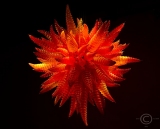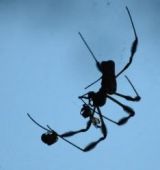- Forum
- General Discussion | Introductions | Off Topic Forum
- Photography General Discussion
- Investing in better camera or buying a cheaper body and expensive (and better) lenses
Investing in better camera or buying a cheaper body and expensive (and better) lenses
-

- John Landolfi
- Super User
-
- Nikon D3S, D7100, Sony RX10, Canon G11, F4s, F2sb, RetinaflexIV etc, etc
- Followers: 1205
- Posts: 21605
-
Points:
40394
Post #238927
-

- KCook
- Photo Elder
-
- Canon EOS 50D and Olympus E-P5
- Followers: 1325
- Posts: 5410
-
Points:
32913
-

- Nod
- Lone Wolf
-
- Sony a100 & Minolta Maxxum 70
- Followers: 3
- Posts: 191
-
Points:
0
-

- rmeyer7
- Master of the Lens
-
- Canon 6D, Canon 5D mk. ii, Canon 50D
- Followers: 105
- Posts: 1640
-
Points:
2086
Post #238939
-

- Dori
- Moderator
-
- Nikon D5000
- Followers: 167
- Posts: 7371
-
Points:
12
Post #239343
The reason to own top end is for greater flexibility and better images through out more of the f-stop range. The premium cost gets you a few more stops with more clarity. Which is great but they still suffer at the extreme on the two ends. The reason to invest in high end glass is an economic one, in that when it comes to resale value the upper end retains that value to a greater degree. But it has never been a case of that inexpensive lenses are so bad at making images. I dare any of you to take any image and say what level of lens made that image when the lens was used within its sweet spot.
Here is the other thing now. The newer sensor resolutions are becoming so great that even the top end glass is the Achilles Heel to the process. The glass that will be needed to fully optimize this resolution will be even more expensive. This is because it will require more precise optical design and finishing. In reality photographic optics are not as great as people think, if they were sold as astronomical instruments they would be considered the K-Mart level.
So my advice is get what you can afford or save for and learn to use it to its best potential. If you do that you will be fine.
-

- Henry Peach
- Apprentice
-
- I currently use a 5DII or Sony Nex-3 most of the time.
- Followers: 50
- Posts: 2925
-
Points:
16
Post #239444
SVAP wrote: Thanks to limited budget, many of us run into this dilemma. I have always struggled to find a right answer on this question...
There is no one right answer to this question. Tell us more about what you shoot. What is your budget? What are you using now? Etc...
Price tag is a lousy way to judge whether a tool is a good choice for you or not. Consider specific features, and how they would be useful for your photography.
Don't be afraid that cheaper gear will limit you. Anything by the well-known brands is usually wonderfully amazing gear quite capable of producing excellent quality work in the right hands.
-

- Screamin Scott
- Moderator
-
- Nikon D610, Nikon D7100, Nikon D300, Olympus OMD E-M5 MarkII, Olympus OM-D E-M10, Olympus Pen E-P3 + film SLR's
- Followers: 1384
- Posts: 6859
-
Points:
40132
Post #239445
- Forum
- General Discussion | Introductions | Off Topic Forum
- Photography General Discussion
- Investing in better camera or buying a cheaper body and expensive (and better) lenses
Latest Reviews
The Panasonic G9 II is a 25.2-megapixel micro four thirds camera with numerous features that make it punch out of its weight class, like 779 AF points, 5.8K video, and weather sealing.
The Fujifilm XT5 is a 40MP mirrorless camera capable of 6.2K video at 30p. With those specs, it’s an ideal choice for photographers needing a camera to pull double duty for imaging and video.
The Canon EOS R100 is an entry-level mirrorless camera introduced in 2023. But just because it’s an entry-level camera doesn’t mean it’s a bare-bones camera. Find out why in this review!
Nikon’s retro-looking Nikon Zfc is anything but retro. Under its classic body is a host of features and amenities that make it a worthwhile compact mirrorless camera for 2024.
Forum Top Posters
-
1Scotty 6 posts
-
2TCav 6 posts
-
3Ruby Grace 4 posts
-
4Street Shark 4 posts
-
5Nefarious 3 posts
-
6Roger Lang 3 posts
-
7Carter Gledhill 2 posts
-
8Chris Briggs 2 posts
-
9Garbo 2 posts
-
10amirahusse... 2 posts
Latest Articles
Starting a photography business is one thing; sustaining your business over a long period of time is another. Use the tips in this professional photography guide to build something with longevity!
The Panasonic G9 II is a 25.2-megapixel micro four thirds camera with numerous features that make it punch out of its weight class, like 779 AF points, 5.8K video, and weather sealing.
Cinematic photography is an interesting genre that combines photographic and videographic skills along with effective storytelling techniques. The result? Highly impactful images!
Newborn photography requires skill, the right gear, and a lot of patience. This beginner’s guide discusses critical topics that will help you be more prepared for before, during, and after the shoot.
To fill the frame means to expand the footprint of the subject in your shot. Get in close, zoom in, crop the image, or use other techniques to bring the subject to the forefront.
With these simple yet effective beginner photography tips, you can avoid some of the common mistakes beginners make and get improved results with your images.
Urban photography is a genre showcasing features in urban settings. You can photograph people, architecture, mass transit, and many other subjects. Learn how to do so in this guide!
The Nikon D850 might be an older DSLR, but it was ahead of its time when it debuted in 2017. That means it still has plenty of firepower to compete with today’s powerful mirrorless cameras.















